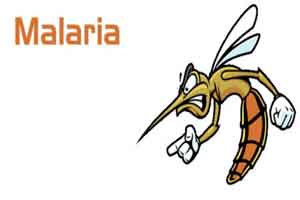- Home
- Medical news & Guidelines
- Anesthesiology
- Cardiology and CTVS
- Critical Care
- Dentistry
- Dermatology
- Diabetes and Endocrinology
- ENT
- Gastroenterology
- Medicine
- Nephrology
- Neurology
- Obstretics-Gynaecology
- Oncology
- Ophthalmology
- Orthopaedics
- Pediatrics-Neonatology
- Psychiatry
- Pulmonology
- Radiology
- Surgery
- Urology
- Laboratory Medicine
- Diet
- Nursing
- Paramedical
- Physiotherapy
- Health news
- Fact Check
- Bone Health Fact Check
- Brain Health Fact Check
- Cancer Related Fact Check
- Child Care Fact Check
- Dental and oral health fact check
- Diabetes and metabolic health fact check
- Diet and Nutrition Fact Check
- Eye and ENT Care Fact Check
- Fitness fact check
- Gut health fact check
- Heart health fact check
- Kidney health fact check
- Medical education fact check
- Men's health fact check
- Respiratory fact check
- Skin and hair care fact check
- Vaccine and Immunization fact check
- Women's health fact check
- AYUSH
- State News
- Andaman and Nicobar Islands
- Andhra Pradesh
- Arunachal Pradesh
- Assam
- Bihar
- Chandigarh
- Chattisgarh
- Dadra and Nagar Haveli
- Daman and Diu
- Delhi
- Goa
- Gujarat
- Haryana
- Himachal Pradesh
- Jammu & Kashmir
- Jharkhand
- Karnataka
- Kerala
- Ladakh
- Lakshadweep
- Madhya Pradesh
- Maharashtra
- Manipur
- Meghalaya
- Mizoram
- Nagaland
- Odisha
- Puducherry
- Punjab
- Rajasthan
- Sikkim
- Tamil Nadu
- Telangana
- Tripura
- Uttar Pradesh
- Uttrakhand
- West Bengal
- Medical Education
- Industry
3D structure of 'causative agent' of malaria constructed

Washington: Providing valuable knowledge for the design of anti malaria drugs, Okinawa Institute of Science and Technology GraduateUniversity (OIST) reconstructed the 3D structure of one of the proteins of Plasmodium falciparum, the causative agent of malaria and the antibodies that act as the first line of defence against the parasite.
Plasmodium falciparum is transmitted to humans by the bite of some species of the Anopheles mosquito. Once inside the human body, the parasite soon reaches the liver where it matures and it is then ready to infect red blood cells, also called erythrocytes.
One strategy used by the pathogen to amplify its spreading probability is the formation of rosette-shaped clusters of uninfected erythrocytes surrounding a malaria-infected red blood cell. Since the parasite in the central cell of the rosette can easily infect the surrounding cells, the rosette enhances the infection.
One of the key players in the formation of the rosette is the protein PfEMP1, Plasmodium falciparum erythrocyte membrane proteinp PfEMP1 sticks out of the infected red blood cell and deceives one of the first defenses against malaria called the IgM antibodies.
The technique used by OIST researchers allows them to have a unique dynamic view of the proteins' conformation.
Having this 3D structural model of the PfEMP1 and IgM complex can help scientists to design anti-malaria pharmacological treatments that can break down or wash out malaria rosettes without hurting the patient.
Plasmodium falciparum is transmitted to humans by the bite of some species of the Anopheles mosquito. Once inside the human body, the parasite soon reaches the liver where it matures and it is then ready to infect red blood cells, also called erythrocytes.
One strategy used by the pathogen to amplify its spreading probability is the formation of rosette-shaped clusters of uninfected erythrocytes surrounding a malaria-infected red blood cell. Since the parasite in the central cell of the rosette can easily infect the surrounding cells, the rosette enhances the infection.
One of the key players in the formation of the rosette is the protein PfEMP1, Plasmodium falciparum erythrocyte membrane proteinp PfEMP1 sticks out of the infected red blood cell and deceives one of the first defenses against malaria called the IgM antibodies.
The technique used by OIST researchers allows them to have a unique dynamic view of the proteins' conformation.
Having this 3D structural model of the PfEMP1 and IgM complex can help scientists to design anti-malaria pharmacological treatments that can break down or wash out malaria rosettes without hurting the patient.
Next Story


